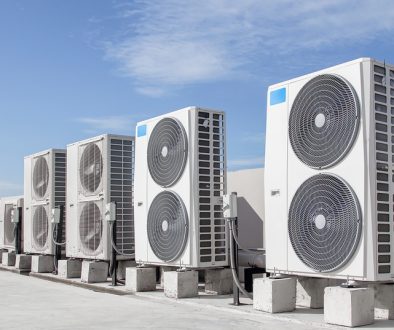Thermal monitoring of frozen foods: a new protocol for the cold chain
One of the most delicate aspects of food storage is the thermal monitoring of frozen foods. The ability to detect, record and manage fluctuations in temperature across the cold chain in real time is crucial to ensuring quality and safety. The slightest error in this procedure can lead to health risks, a breakdown in consumer trust and significant financial losses.
In order to avoid such consequences, the technologies and processes that regulate the cold chain are constantly updated, including for example, the recent protocol developed by the Global Cold Chain Alliance (GCHA) and American Frozen Food Institute, which could revolutionise the entire sector as it contains many new strategies designed to modernise the traditional practices used in this extremely delicate and important operation.
Traditional thermal monitoring methods and new strategies in the GCCA-AFFI protocol
Historically, cold management procedures in the frozen food supply chain were based on uniform temperature limits, set out in national and international legislation. Monitoring mostly happened at moments of ownership transfer, such as the handover of a product from producer to transporter or distributer to retailer, via document checks or physical inspections.
Athough it had provided relative stability for decades, this system involved some obvious limitations. Checks were intermittent, or were carried out only at certain times, leaving long periods without checks, when potentially dangerous undetected breakdowns could take place.
Furthermore, responsibility was fragmented, with each worker responsible only for checking their own specific segment of the supply chain, with resulting difficulties in attributing blame in case of damage. Finally, as the ability to prevent problems was limited, breakdowns were often detected only after they happened, with no option to take advance preventative measures.
The joint GCCA and AFFI protocol marks a fundamental step towards an automised, continuous control method, capable of meeting the challenges described above. Unlike standard procedures, this approach is based on constant supervision, made possible by digital platforms and advanced sensors which can detect fluctuations and generate immediate alarm warnings.
Another innovative element is certainly data centralisation. The information no longer remains confined within a single segment of the supply chain but is spread across a unified system, allowing for a global analysis and complete traceability.
The integration of modern technologies, like the Internet of Things, cloud platforms and predictive analysis tools, allows simple data gathering to be transformed into a prevention tool. The aim is not only to record system failures but to predict them and intervene before the cold chain is compromised.
Operational and strategic advantages
The introduction of a system of standardised, continuous thermal monitoring of frozen foods brings numerous advantages. From an operational point of view, digitalisation cuts costs and shortens timescales when compared with manual inspections and documentation management. Furthermore, the availability of data in real time permits fast, informed decision-making, improving both logistics and stock management.
As regards quality, it drastically reduces the risk of product deterioration, microbial proliferation and the loss of product characteristics such as taste and aroma. This reinforces consumer safety and contributes towards building brand trust.
Another benefit is environmental sustainability. Thanks to the ability to regulate refrigeration systems more accurately, energy consumption and carbon dioxide emissions will be considerably reduced, in line with global targets on reducing the environmental impact.
In addition, this transversal transparency across the supply chain encourages shared responsibility between everyone involved in the procedures. If an anomaly is detected, it becomes easier to identify the source of the problem, reducing waste and the need for costly product recalls.
It should also be highlighted however that from an economic point of view, standardised thermal monitoring may be viewed both as an investment and an opportunity. The introduction of sensors, digital platforms and centralised infrastructure initially requires signficant financial resources, as well as specialised staff training programmes.
In any case, the reduction in waste, product recalls and controversies amply compensates for the initial costs. Furthermore, companies who adopt the protocol swiftly can gain a competitive edge by differentiating themselves in the market thanks to their offer of greater reliability, safety and sustainability.
Potential implementation issues
As mentioned above, one of the main difficulties with the introduction of the GCCA-AFFI protocol is the financial aspect. The initial costs can be a real barrier, especially for small and medium businesses, not to mention management of the large quantities of data involved, requiring robust cybersecurity systems capable of protecting this sensitive information from possible cyber attacks.
There is also the issue of global standardisation, which remains a complex challenge, as the frozen food supply chain is an international one and it must harmonise different practices and regulations. Despite the fact that the entire sector cares deeply about the principles of transparencey and safety across the cold chain, getting different states to engage in a dialogue will not happen immediately and it could take time before they all decide to comply with this new standard.
Given the enormous advantages offered by the new protocol on the thermal monitoring of frozen foods, it is reasonable to expect the adoption process to be completed relatively soon, effectively making it a legislative obligation or an essential requirement of cold chain quality certification.
It is undeniable that this protocol, developed by GCCA and AFFI, will bring revolutionary changes to the sector. Switching from sporadic checks to a centralised system operating in real time means not only improved food safety but also optimised logistics, which will work to reduce the environmental impact and build consumer trust.
It must not therefore be considered as a mere technical measure, but rather a genuine change in approach to cold chain management, from a simple control tool to an integrated system of prevention, innovation and sustainability.







